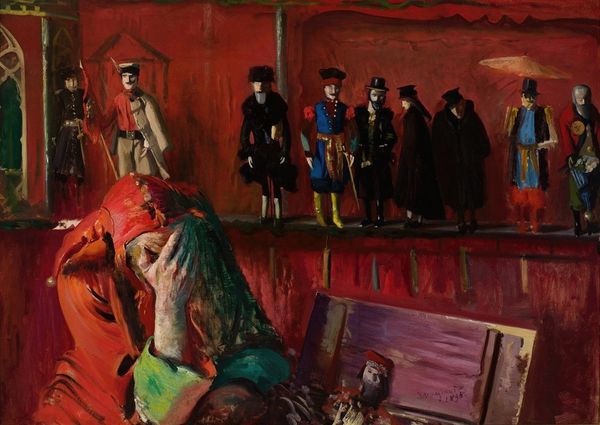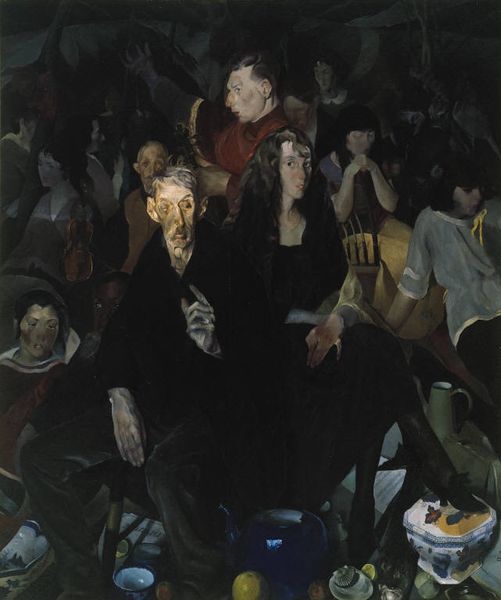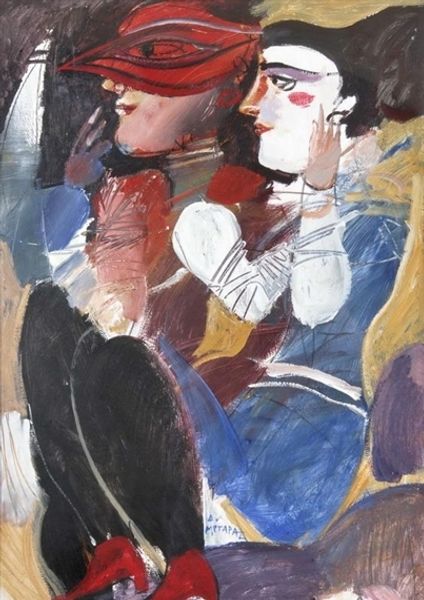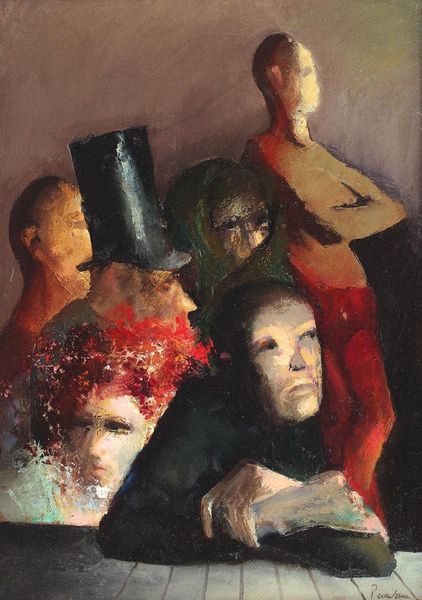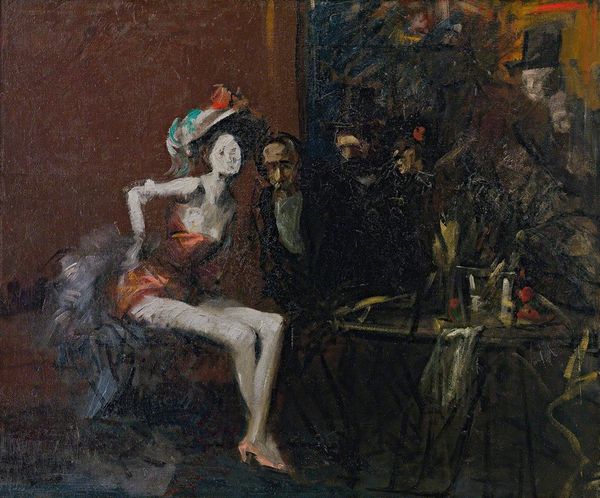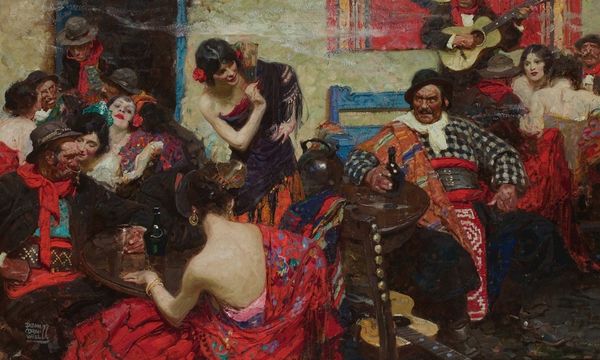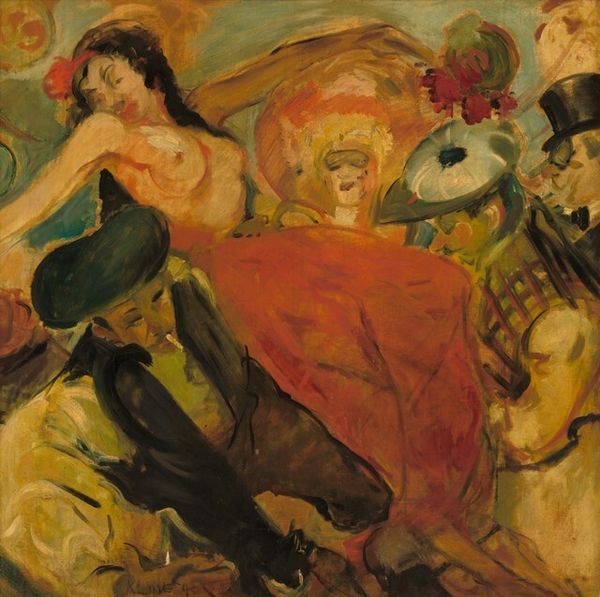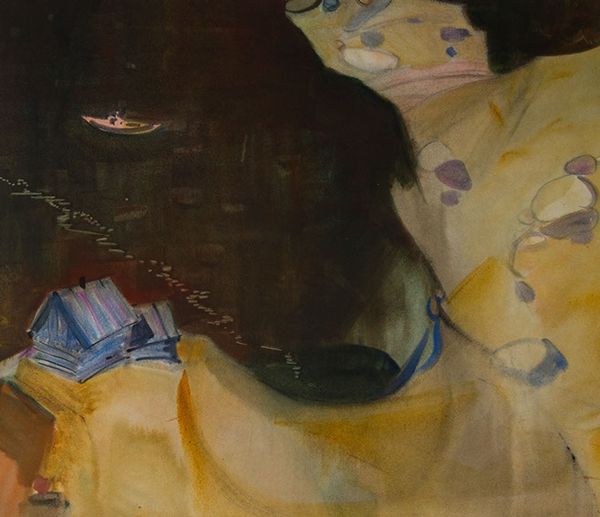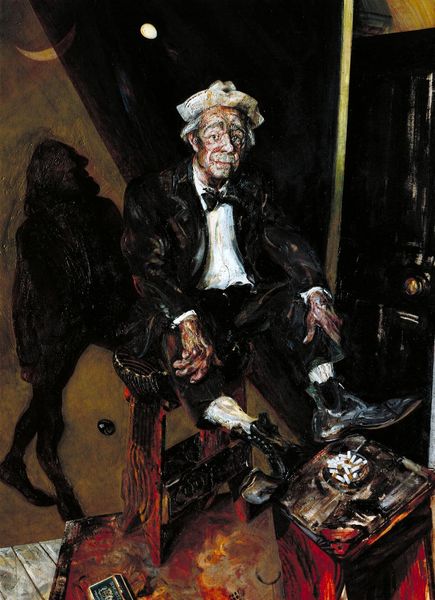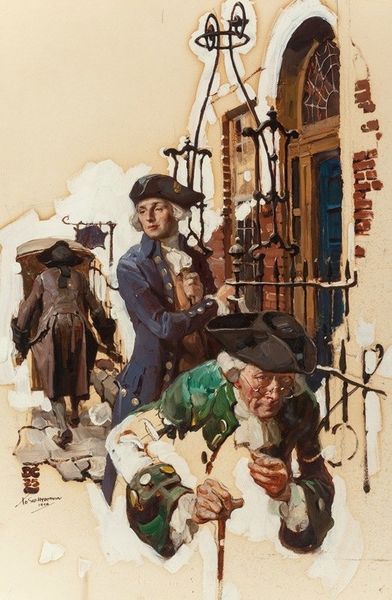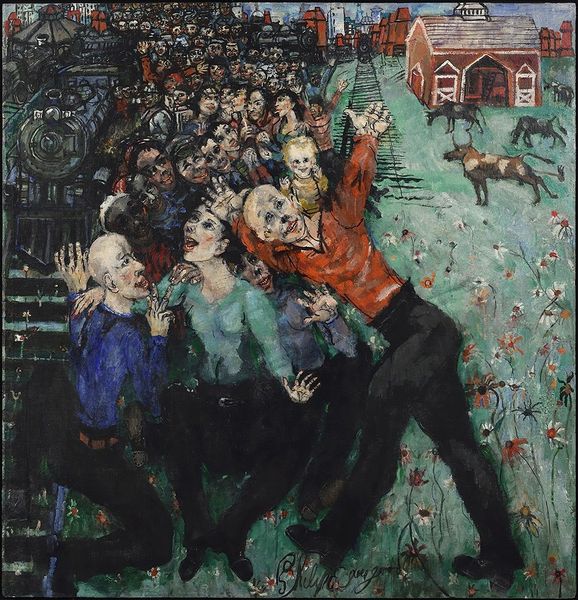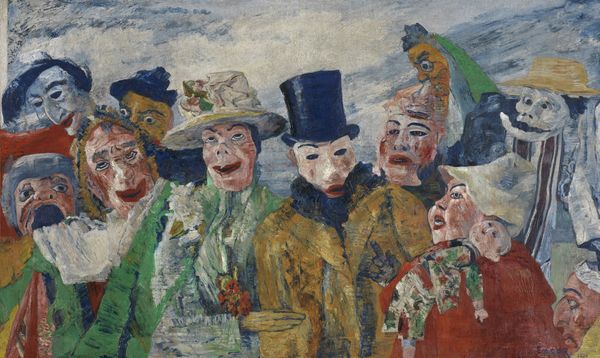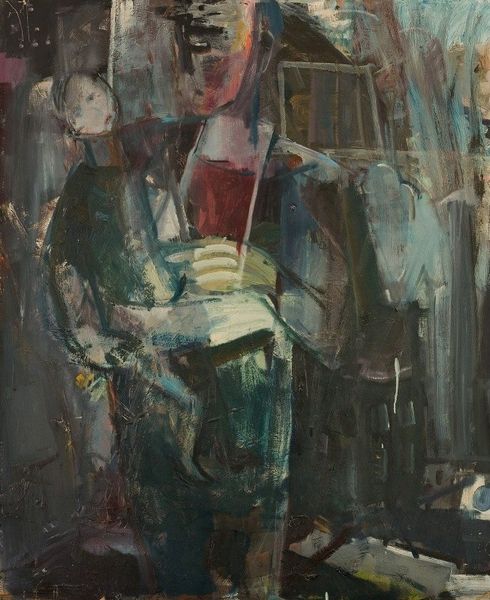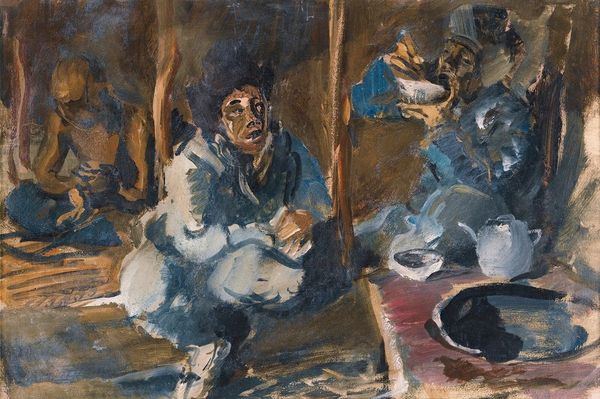
Dimensions: support: 2280 x 920 x 5 mm
Copyright: © Tate | CC-BY-NC-ND 4.0 DEED, Photo: Tate
Curator: This is Ruskin Spear's "Haute Couture," part of the Tate collection. It's a large painting, over two meters tall, a real statement piece. Editor: It's wonderfully awkward! Everyone seems so self-conscious, like a room full of slightly deflated expectations. Curator: Spear, born in 1911, often depicted everyday life with a touch of irony. The figures here, are they observing or being observed? It's ambiguous. Editor: Their clothing seems to hint at status, but there's this wonderful theatricality—the woman in the hat, especially. Her face almost seems like a mask. Curator: Masks can be powerful symbols of identity, or lack thereof. Spear captures a certain post-war austerity, perhaps a critique of superficiality. Editor: It's funny, I feel sympathy for these characters despite their pretensions. They are like moths fluttering around a flame that's already gone out. Curator: A beautifully melancholic observation. Spear really gives you a lot to ponder with his choice of muted color and bold composition. Editor: Exactly. I love how he turned what could be stuffy subject matter into something quite emotionally resonant, even touching.
Comments
Join the conversation
Join millions of artists and users on Artera today and experience the ultimate creative platform.
tate 6 months ago
⋮
Contemporary critics often made links between post-war social realism and previous schools of British art. Among these the Camden Town Group was most commonly cited, especially the paintings of Walter Sickert. Undoubtedly Sickert’s pictures of ‘the poetry of everyday life’ were of major importance to Ruskin Spear and others. As in this painting of a fashion show, Spear even used newspaper photographs as source material, just as Sickert had done. The picture is a parody of the elitist world of high fashion, in which Spear had worked during the war. Gallery label, September 2004
